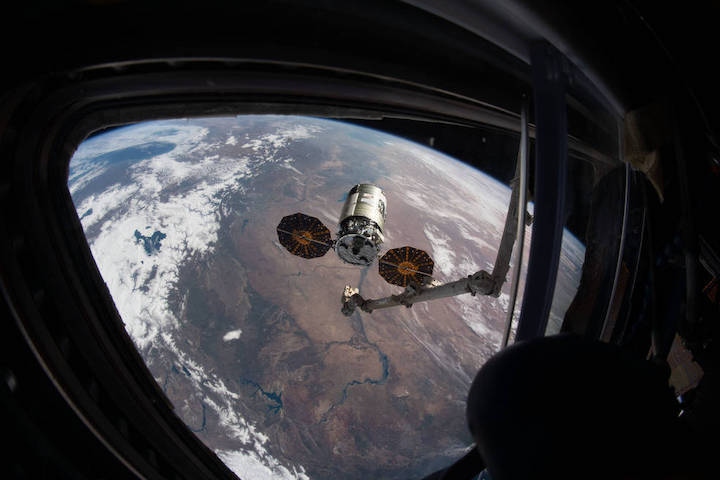24.06.2021

Editor's Note: This advisory was updated June 23, 2021, with the correct number of satellites Cygnus will deploy after departure.
Northrop Grumman’s uncrewed Cygnus spacecraft is scheduled to depart the International Space Station Tuesday, June 29, more than four months after delivering nearly 8,000 pounds of supplies, scientific investigations, commercial products, hardware, and other cargo to the orbital laboratory.
Live coverage of the spacecraft’s departure will begin at noon EDT on NASA Television, the agency’s website, and the NASA app. Northrop Grumman named the spacecraft after NASA mathematician Katherine Johnson, a Black woman broke through barriers of gender and race, calculating orbital mechanics for some of the first U.S. human spaceflights.
Flight controllers on the ground will send commands for the space station’s Canadarm2 robotic arm to detach Cygnus from the Unity module’s Earth-facing port. The arm will then maneuver the spacecraft into position and release it at 12:25 p.m. NASA astronaut Megan McArthur will monitor Cygnus’ systems upon its departure from the space station.
After departure, Cygnus will deploy five CubeSats, includuing the Ionosphere Thermosphere Scanning Photometer for Ion-Neutral Studies (IT-SPINS), which will add to researchers’ fundamental understanding of Earth’s Ionosphere, and the Khalifa University Students Satellite-2 (MYSat-2), which will train graduate students through the development and evaluation of its software.
Cygnus will then perform a deorbit engine firing to set up a destructive re-entry in which the spacecraft, filled with waste the space station crew packed, will burn up in Earth’s atmosphere.
Cygnus arrived at the International Space Station Feb, 22, following a launch two days prior on Northrop Grumman’s Antares rocket from NASA’s Wallops Flight Facility on Wallops Island, Virginia. It was the company’s 15th commercial resupply services mission to the space station for NASA.
Quelle: NASA

